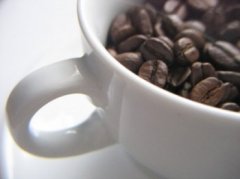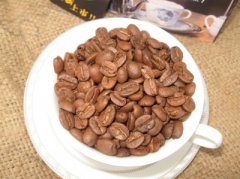Cold posture | explain how to make decaf coffee

For professional baristas, please follow the coffee workshop (Wechat official account cafe_style)
Factors affecting caffeine content, such as the type of coffee beans, soaking time, grinding thickness, cooking method, water temperature, extraction time. Wait. Caffeine has some effects on the body, which leads to the popularity of decaffeinated coffee.
Decaffeinated coffee means that before roasting, the coffee is specially treated to remove 96% of the caffeine from Murray and 98% of the caffeine. A cup of coffee contains about 5% caffeine. Generally speaking, there are three ways to remove caffeine:
I. solvent extraction
Direct extraction method:
Coffee beans are softened, then heated with high-temperature and high-pressure steam to expand the bean surface and increase the contact area, then the dichloromethane (CH3CI) solvent is poured into the bean to contact the solvent to extract caffeine.
In this method, dichloromethane is used to adsorb bean surface to dissolve caffeine, but it does not affect the flavor of coffee beans.
Indirect extraction method:
The beans are softened first, then poured into warm water, and the caffeine and other ingredients of the beans are dissolved into warm water. At this time, the solution becomes the coffee essence, and then the coffee essence is imported into another container to add dichloromethane. After heating, caffeine will evaporate with the extract solution. Finally, the non-caffeinated essence is introduced into the coffee beans extracted in warm water, allowing the coffee beans to reabsorb the lost ingredients.
This method uses indirect extraction, but it is easy to lose the flavor of coffee.
II. Swiss Water treatment method
After the coffee beans are soaked in warm water, after caffeine and other ingredients are dissolved in the water, the caffeine in the essence is filtered with activated carbon, and then the non-caffeinated essence is introduced back to the previous coffee beans, allowing the coffee beans to reabsorb the lost ingredients.
This approach emphasizes that caffeine is not extracted with any chemical solvent, which is also a choice for healthy eaters; although it is not extracted with chemical solvents, some of the ingredients of the coffee are also filtered by activated carbon, resulting in the loss of some flavor of the coffee, not only that, the low-caffeinated coffee produced by this method is also more expensive.
III. Carbon dioxide high pressure extraction
When roasting coffee beans, there is a large amount of carbon dioxide (CO2). At this time, the carbon dioxide is treated under high pressure to become liquid, and then poured into the processed coffee beans to remove caffeine, and then the pressure is released to convert the carbon dioxide into gas volatilization.
The removal of caffeine in this way will not cause damage to the coffee beans, the color will not change, and it is not easy to extract substances other than caffeine, so it can retain the original flavor of coffee beans, but because it needs a special high-pressure environment to complete, requires a large amount of investment in equipment, so the amount of low-caffeinated coffee extracted in this way is less than that seen on the market.
Important Notice :
前街咖啡 FrontStreet Coffee has moved to new addredd:
FrontStreet Coffee Address: 315,Donghua East Road,GuangZhou
Tel:020 38364473
- Prev

Knowledge about the blending sequence of Italian mixed beans
Communication of professional baristas Please pay attention to Coffee Workshop (Wechat official account cafe_style) Pure coffee is to brew coffee beans from specific producing areas, and mixed coffee is to mix coffee from different producing areas, so that the flavor of the coffee is changed. Tasting pure coffee is a top enjoyment, enjoying its simplicity, unique flavor and personality; mixed coffee is not bad, with a more diverse and special flavor; between simplicity and complexity
- Next

Difference of coffee flavor in different coffee filter cups
Professional barista communication please pay attention to the coffee workshop (Wechat official account cafe_style) ● these are personal subjective consciousness of coffee, affected by brewing methods, water temperature, powder thickness, personal provide conceptual feelings, I am not a professional cup tester, just coffee lovers, please do not take me seriously, thank you have several filter cups, respectively, kono purple sand, kon
Related
- Beginners will see the "Coffee pull flower" guide!
- What is the difference between ice blog purified milk and ordinary milk coffee?
- Why is the Philippines the largest producer of crops in Liberia?
- For coffee extraction, should the fine powder be retained?
- How does extracted espresso fill pressed powder? How much strength does it take to press the powder?
- How to make jasmine cold extract coffee? Is the jasmine + latte good?
- Will this little toy really make the coffee taste better? How does Lily Drip affect coffee extraction?
- Will the action of slapping the filter cup also affect coffee extraction?
- What's the difference between powder-to-water ratio and powder-to-liquid ratio?
- What is the Ethiopian local species? What does it have to do with Heirloom native species?

